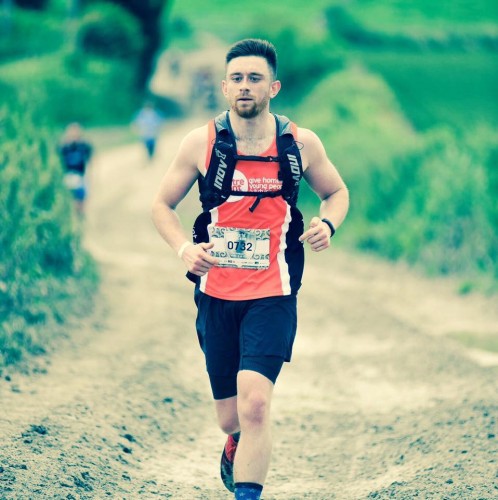
If, for you, the word chiropractor conjures up images of cracked backs and grimaces, you’re not alone.
Prior to my recent experience, I thought chiropractic care was a synonym for pain – reserved as a last resort for those with ‘serious’ problems.
It was with some trepidation, then, that I made my way to The London Wellness Centre a couple of weeks ago for a ‘chiropractic consultation’.
On arrival, I’m introduced to Oliver Eccles, who’s a Doctor of Chiropractor and who, perhaps sensing my concern – quivering in the corner’s a difficult look to style out – immediately puts me at ease.
After a few health questions, I soon find myself standing shirtless in front of a full-length mirror.
Just as I’m wondering whether I’m in for a Trinny and Susannah-style body confidence session, Oliver explains that my spine is ‘S-shaped’ – technical term: scoliosis – and my posture is “pretty bad.”
No confidence to be found here, then.

Isaac’s ‘S-shaped’ spine
“Improper alignment is caused by lots of things,” he explains, “the most common are sitting and poor posture.
“If you spend eight hours a day in a poor alignment, your body gets used to it and adapts to that.”
Heroically, I manage to haul my Quasimodo frame to the ‘chiropractic bench’, where the cracking begins…
“Runners can benefit from chiropractic care in three main ways: injury recovery, injury prevention and improving function” Oliver says, as he twists my upper body in ways I didn’t know it could be twisted and cracks things that I didn’t know could be cracked.
(The cracking sound is actually trapped gas escaping from between the joints, rather than the bones themselves.)
“Chiropractic focuses on allowing the body to function to its full capacity, therefore allowing the body to heal correctly and deal with stresses correctly.
“This leads into a third point, that functioning better often allows for faster times and feeling good while running.”
So seeing a chiropractor can be a preventative measure, as well as a cure?
“Yes, of course, preventing is always a lot easier than curing.
“If we stop the ankle sprain from occurring we avoid things like scar tissue that is always there after the point of damage and leads to weak points in the body.
“It is very much the same as a dentist: it’s a lot better to brush your teeth, as once there’s a cavity there isn’t a ‘cure’.”
After a painful – albeit not as bad as I expected – 15 minutes on the bed, I feel noticeably lighter and more mobile.
To really solve my alignment issues, however – particularly in my pelvis, which is contributing to my ‘S-shaped’ spine – Oliver prescribes a couple of daily exercises.
“Back issues are normally down to a weak core, especially transverse abdominis,” he says.
“This is often down to long hours sitting hunched over a computer.
“So my tip would be to include a core stabilisation exercise every day.
“My favourite exercises are the dead bug, planks, and bird-dog.
“The core is designed to brace and keep things stable (not to move), so train it in this fashion.
“That means sit-ups are useless as they are not training the function that we want it for – how often when you’re running do you go into a sit-up position?”
With my session over, I float out the door feeling considerably lighter and ready for my newfound posture to guide me to impeccable form and stratospheric running success.
Failing that, I have at least learned that the chiropractor needn’t be feared.
For runners looking to enjoy a long and healthy relationship with the sport, chiropractic treatment can prevent the imbalances that, though minor to start off with, could have more serious implications further down the line.
For more information on chiropractic care and to book a consultation, visit thisislondonwellness.com.






